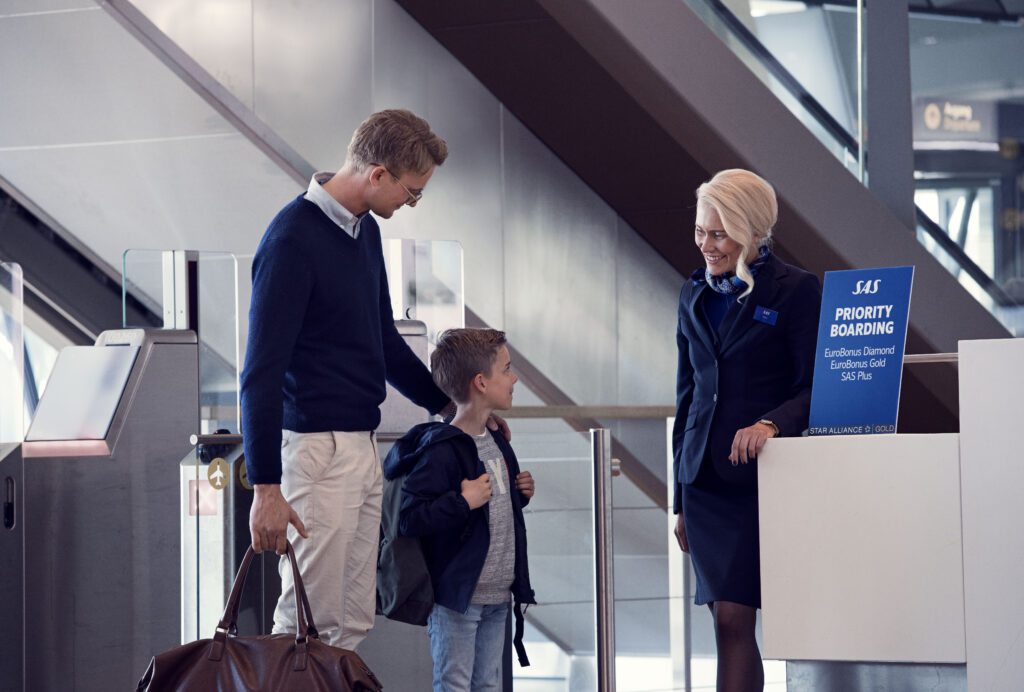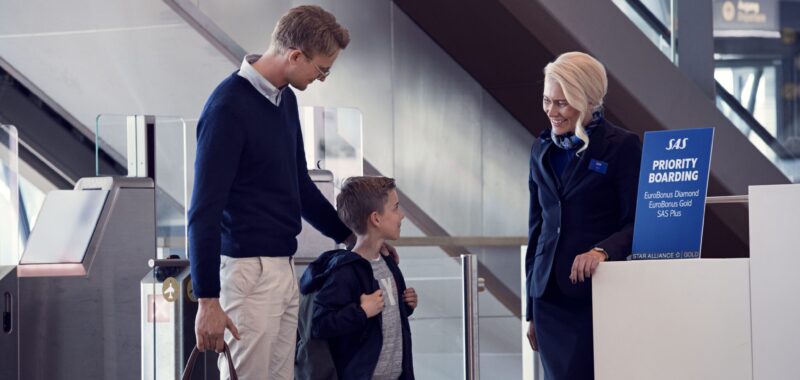
Skift Take
Air France-KLMâs significant stake is more than just a strategic moveâit’s the latest stage of deepening consolidation in Europe’s airline industry. With SAS defecting to the SkyTeam alliance and expanding cooperation with new partners, expect tighter network integration in the months ahead.
The Air France-KLM Group has officially become a shareholder in SAS Scandinavian Airlines. The agreement marks the conclusion of one of the yearâs biggest airline deals and heralds the latest phase of consolidation in the European airline industry.
On Wednesday, the Franco-Dutch firm formally concluded its acquisition of a 19.9% shareholding in SAS. Despite being a non-controlling stake, the company will make its presence felt as soon as Sunday. In a market filing, Air France-KLM said âextensive commercial cooperationâ will start from September 1.
Air France-KLM joined a consortium including Castlelake, Lind Invest, and the government of Denmark in the nearly $1.2 billion deal. The purchase forms a key part of SAS’s financial restructuring that helped salvage the Scandinavian carrier from extreme financial distress. With so many moving parts in the mix, here are three key areas to watch in the coming weeks:
#1: Switch from Star Alliance to SkyTeam
With Air France-KLM a cornerstone of the SkyTeam group of airlines, and SAS a founding member of rival Star Alliance â something had to give. On September 1, SAS will formally join SkyTeam. This major shift has implications across multiple areas, but one of the biggest is loyalty programs.
SAS says reciprocal frequent flyer benefits will start on September 1. The agreements cover Air France-KLMâs Flying Blue platform and SASâ EuroBonus program. Put simply, members should be able to âearn and burnâ points more easily within the new partner airlines. September 1 also marks the switch date for eligible EuroBonus members to use SkyTeam benefits including SkyPriority status at airports and global lounge access.
Notably, this means regular flyers with Star Alliance, such as United Airlines, will no longer enjoy the same perks when traveling with SAS.
This is a blow to Star Alliance’s footprint in northern Europe, but Scandinavia wonât become a black hole for the organization. As the worldâs biggest airline group, Star has 17 other members offering nonstop flights to the region. This includes major players such as Air Canada, Air India, Lufthansa, and Turkish Airlines.
In a slightly cryptic statement, the organization also teased possible expansion to compensate for the loss of SAS, noting that members âmay bring additional service to Scandinaviaâ in the future. For a full list of members check out this Star Alliance Skift explainer.
#2: Changes to Route Networks and Options
According to the new partners, headline developments include âfar-reaching interline and codeshare agreementsâ to improve connections between airport hubs.
Air France has its primary base at Parisâ Charles de Gaulle airport, while KLMâs global network is focused around Amsterdam Schiphol. As the flag carrier of Denmark, Norway, and Sweden, SAS currently operates a three-hub strategy with efforts centered in Copenhagen, Oslo, and Stockholm.
The changes will make it easier for passengers to buy tickets and connect between flights operated by the various airlines. In time, expect improved connectivity between Air France-KLM and SAS hub cities to help feed onward traffic.
History also suggests that there could be some âroute rationalizationâ, as overlapping networks are simplified to reduce costs and boost group profitability. It remains to be seen how the status of the three Scandinavian capitals will evolve as Air France-KLM enters the fold.
From Sunday, Air France-KLM passengers will have easier access to 33 destinations in Northern Europe via SAS hubs. In return, SAS travelers can connect in Paris and Amsterdam to 33 onward locations.
#3: The Start of âA New Eraâ
Most eyes are on the Air France-KLM developments on Wednesday, however, SAS had a separate milestone to celebrate. The Scandinavian company confirmed that it has completed and emerged from Chapter 11 bankruptcy proceedings in the United States.
SAS filed for Chapter 11 in July 2022, making good on earlier threats from airline management that it would do so if it was unable to secure concessions from key stakeholders. The carrier joined a long list of airlines that restructured during the Covid crisis. These included big names such as Aeromexico, Avianca, Latam Airlines Group, Philippine Airlines, Thai Airways, and Virgin Australia.
Anko van der Werff, SAS President and CEO described the restructuring as âa historic day that marks the start of an exciting future.â He acknowledged the process had been complex, but the efforts âmade it possible to save and restart one of the finest companies in Scandinavia.â
âNow, we must look ahead and complete the transformation that we have started, continue our commitment to achieving net-zero emissions by 2050, and take advantage of the opportunities in a growing market,â added the SAS chief.
What Happens Next at SAS?
While significant in its own right, Air France-KLMâs 19.9% stake could be just the start of a much larger commercial process. The terms of the consortium deal allow the company to increase its shareholding to a controlling position after at least two years. Subject to regulatory approval and financial performance, it could see SAS become even more closely integrated into the Air France-KLM Group.
There is widespread agreement among analysts that further consolidation between European airlines will take place. Last month, the European Commission granted permission for the Lufthansa Group to acquire a 41% stake in Italyâs national carrier, ITA Airways.
For its part, on Wednesday the Franco-Dutch firm described the SAS transaction as a component of its âstrategic roadmapâ.
Speaking at the Skift Global Forum East in Dubai last December, Air France-KLM CEO Ben Smith described the SAS deal as a âlow-risk way of participating in consolidation.â He further hinted that TAP Air Portugal is also of interest. Although the Portuguese airline is currently state-owned, the government said it wants to sell some of its stake to a third party. TAPâs Lisbon hub, which has strong links to Latin America and parts of Africa, is attractive to all three big European airline groups.
However, regulators have not given every deal the green light. Earlier this month, IAG, the parent company of British Airways and Iberia, terminated its proposed takeover of Spanish carrier Air Europa. The company had offered concessions to the EU in June after it warned that the acquisition could be anti-competitive. These included ceding 52% of Air Europaâs flights to its rivals. IAG continues to hold a 20% share in the Mallorca-based firm.
Watch Air France-KLM CEO Ben Smith on the Skift Travel Podcast Here:
Airlines Sector Stock Index Performance Year-to-Date
What am I looking at? The performance of airline sector stocks within the ST200. The index includes companies publicly traded across global markets including network carriers, low-cost carriers, and other related companies.
The Skift Travel 200 (ST200) combines the financial performance of nearly 200 travel companies worth more than a trillion dollars into a single number. See more airlines sector financial performance.
Read the full methodology behind the Skift Travel 200.

